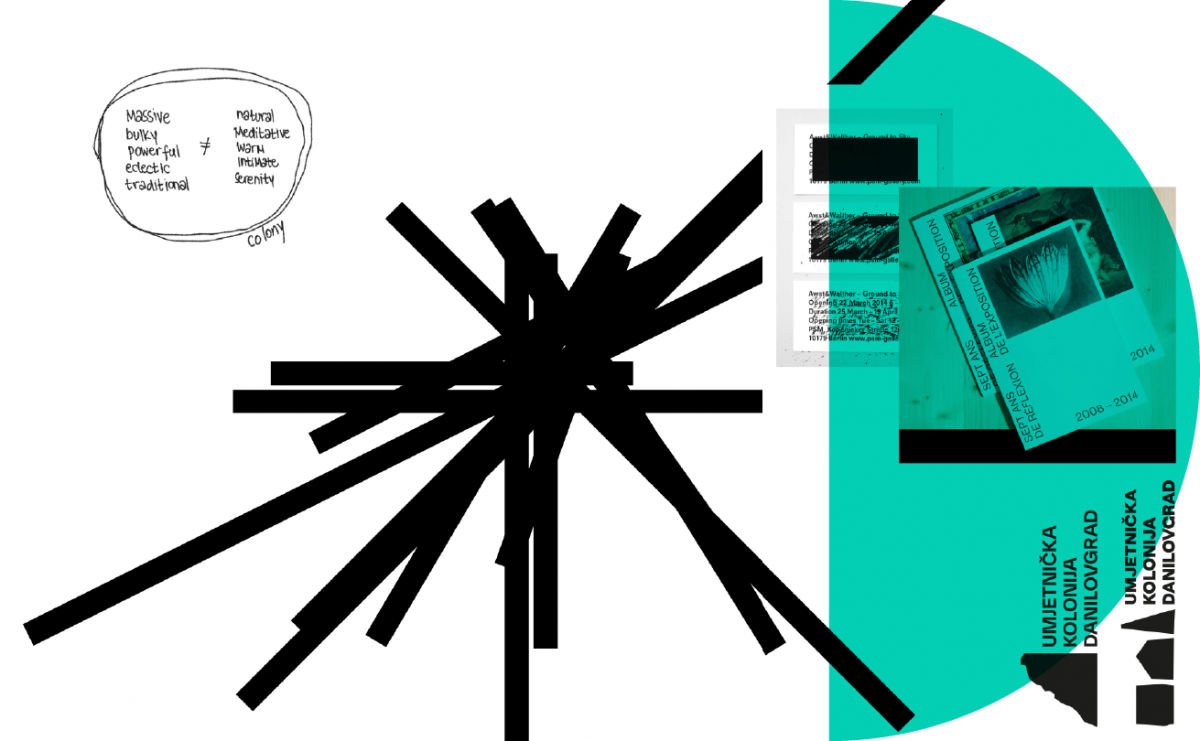 The esteemed, traditional institution Artistic Colony Danilovgrad is undergoing a remarkable transformation, thanks to a dedicated ReCulture team of young designers and experts. With the goal of enhancing and revitalizing the institution’s visual identity, the team has achieved significant milestones, showcasing their expertise and innovative approach.
The esteemed, traditional institution Artistic Colony Danilovgrad is undergoing a remarkable transformation, thanks to a dedicated ReCulture team of young designers and experts. With the goal of enhancing and revitalizing the institution’s visual identity, the team has achieved significant milestones, showcasing their expertise and innovative approach.
Dividing the project into several phases, the team began with comprehensive research and analysis. They delved into the Artistic Colony Danilovgrad’s history, structure, strengths, weaknesses, and examined existing archival materials. This groundwork laid the foundation for the subsequent phases, ensuring a cohesive and impactful visual system applied to cooperative material, social media channels, website, souvenirs and spatial design elements. Building upon their research, the team embarked on the conceptualization stage. Generating a diverse range of ideas, they iterated and refined concepts, drawing inspiration from immersive visits to the institution and design sessions with mentors. Weekly design iterations, coinciding with official meetings of the ReCulture teams, played a pivotal role in collaboration, refinement, and innovation, resulting in impressive outcomes.
Overcoming geographical obstacles between Montenegro, Serbia and Austria, the team embraced remote work as the cornerstone of their success. Through technology and flexible approaches, the team maintained regular collaboration and timely feedback, demonstrating their resilience and commitment to outstanding outcomes. However, the true challenge lay in scheduling weekly meetings, which proved to be a task requiring careful coordination. Yet, the team exhibited exceptional adaptability and resourcefulness, ensuring that communication remained strong and progress continued despite this constraint.
While the majority of the work could be accomplished remotely, certain phases necessitated field visits. To tackle this, a well-coordinated approach was adopted, with one team member, accompanied by a mentor, venturing into the field for documentation collection. Simultaneously, another team member actively engaged in the selection and presentation of the gathered material.
Recognizing the importance of solidifying the design system early on, the team placed particular emphasis on the initial stages of the project. They discovered that intensive fieldwork and in-person meetings with the institution yielded the most significant progress. These experiences provided valuable insights into the institution’s operations and fueled the exploration of new directions for its visual identity. The internal structure of the institution, including the number of staff and their roles, has also played a vital role in shaping the pace of work. The team acknowledges that the institution’s dynamics directly impact the project’s timeline and progress. Live meetings emerged as the optimal solution, serving two critical purposes: presenting the team’s work and planning the institution’s activities. The interactive nature of these meetings facilitated effective collaboration, providing a platform to address concerns, exchange ideas, and ensure alignment with the institution’s vision.
The project benefited greatly from the involvement of a local mentor, Adela Zejnilović (MN), who played essential roles in decision-making, communication, and coordination. Her expertise and understanding of the institution’s vision ensured alignment with international standards while preserving the local context. Furthermore, the inclusion of two young designers, Julija Radosavljević (SRB) and Snežan Bulatović (MN), employing distinct approaches injected international significance into the project, resulting in a visually compelling identity. Consultations with EU mentors, Wolfgang Fiel (AT) and Constantin Demner (AT), provided invaluable insights, harmonizing local design practices with international standards. This exchange of experiences fostered a robust creative environment, shaping a well-rounded and globally influenced visual identity.
This rebranding project aimed to infuse new life into the existing institution by striking a balance between tradition and modernity. The creation of a new logo posed the greatest challenge as the team sought to intertwine the colony’s longstanding tradition with a fresh and contemporary approach.
During the logo development process, the team aimed to highlight the significance of stone as the primary artistic medium while incorporating a sense of creative expression in its treatment. This endeavor involved navigating the delicate balance between showcasing the monumentality associated with the colony’s heritage and embracing innovative perspectives that define its current and future endeavors.
Building upon the logo’s foundation, work on subsequent phases unfolded naturally and in a similar manner. The phase dedicated to spatial communication, inspired by the modular design elements derived from the logo, progressed faster than anticipated. This seamless flow can be attributed to the team’s meticulous attention to detail and their ability to leverage the visual language established in the earlier stages of the project.
The project also encountered challenges related to material selection and archiving, which grew in complexity and duration over time. The institution’s level of preparedness and readiness in meeting these requirements has significantly impacted the overall progress and outcomes of the project.
Throughout the entire process, and particularly in the initial stages of work, the team identified centralizing information as a key strategy to ensure they were up to date with the latest changes and comments at any given moment.
A significant aspect of the team’s work revolves around the digital transformation of the institution. This integration, while challenging, is crucial to the application of the new identity. Aligning the existing identity with new communication channels requires careful execution and will be a key criterion for evaluating the project’s success.
As the project evolves, the team remains committed to its collaborative approach and international perspectives. Ongoing communication and knowledge exchange will continue to drive outstanding results and ensure the project’s success. The ongoing journey of merging tradition and innovation promises to deliver a remarkable visual identity for the Artistic Colony Danilovgrad in Montenegro.
Stay tuned for the next cultural institution!